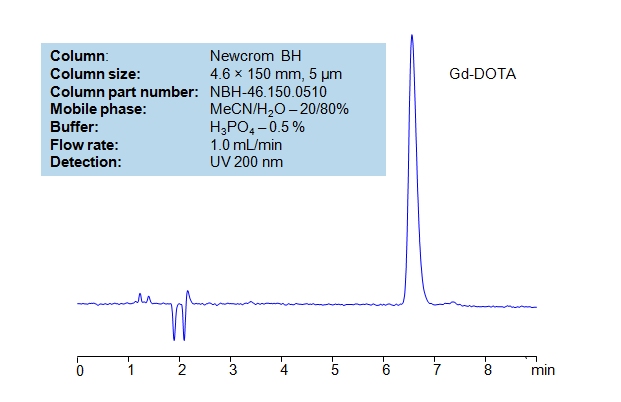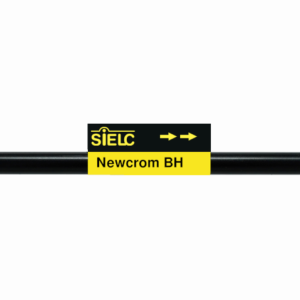Separation type: Liquid Chromatography Mixed-mode

High Performance Liquid Chromatography (HPLC) Method for Analysis of Gadolinium-DOTA
Gadolinium-DOTA, or known Gadoteric acid, is a well-known contrast agent for imaging of (often leaky) blood vessels, the brain, and spine. This compound is composed of dodecane tetraacetic acid, or DOTA, with a Gadolinium III cation in the center. Due to its unique structure, this acidic compound has paramagnetic properties; when exposed to a magnetic field, it develops a magnetic moment, which can be utilized for magnetism-based imaging like MRI and NMR. Gadolinium-DOTA acts as a signal amplifier, thus appearing brighter under MRI scans and highlighting the tissues that have absorbed it. In its salt form (with meglumine), it crosses the blood-brain barrier and allows for imaging of the brain and other areas of the nervous system. Due to its paramagnetic properties, Gadolinium-DOTA fluoresces; it excites at 274 nm and emits light at 312 nm.
This acid can be detected in the low UV regime. Using a Newcrom BH mixed-mode column and a mobile phase consisting of (mostly) water and acetonitrile, Gadolinium-DOTA can be retained, measured, and analyzed. This analysis method can be UV detected at 200 nm with high resolution.
| Column | Newcrom BH, 4.6×150 mm, 5 µm, 100A |
| Mobile Phase | MeCN/H2O – 20/80% |
| Buffer | H3PO4 – 0.5% |
| Flow Rate | 1.0 ml/min |
| Detection | UV, 200 nm |
| Class of Compounds |
Acid |
| Analyzing Compounds | Gadolinium-DOTA |
Application Column
Newcrom BH
The Newcrom columns are a family of reverse-phase-based columns. Newcrom A, AH, B, and BH are all mixed-mode columns with either positive or negative ion-pairing groups attached to either short (25 Å) or long (100 Å) ligand chains. Newcrom R1 is a special reverse-phase column with low silanol activity.
Select options




